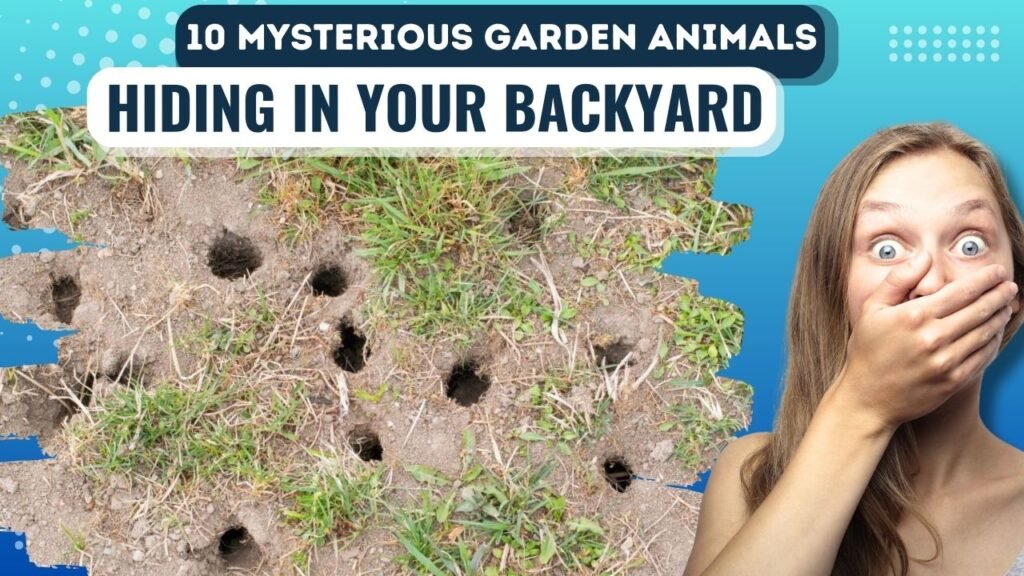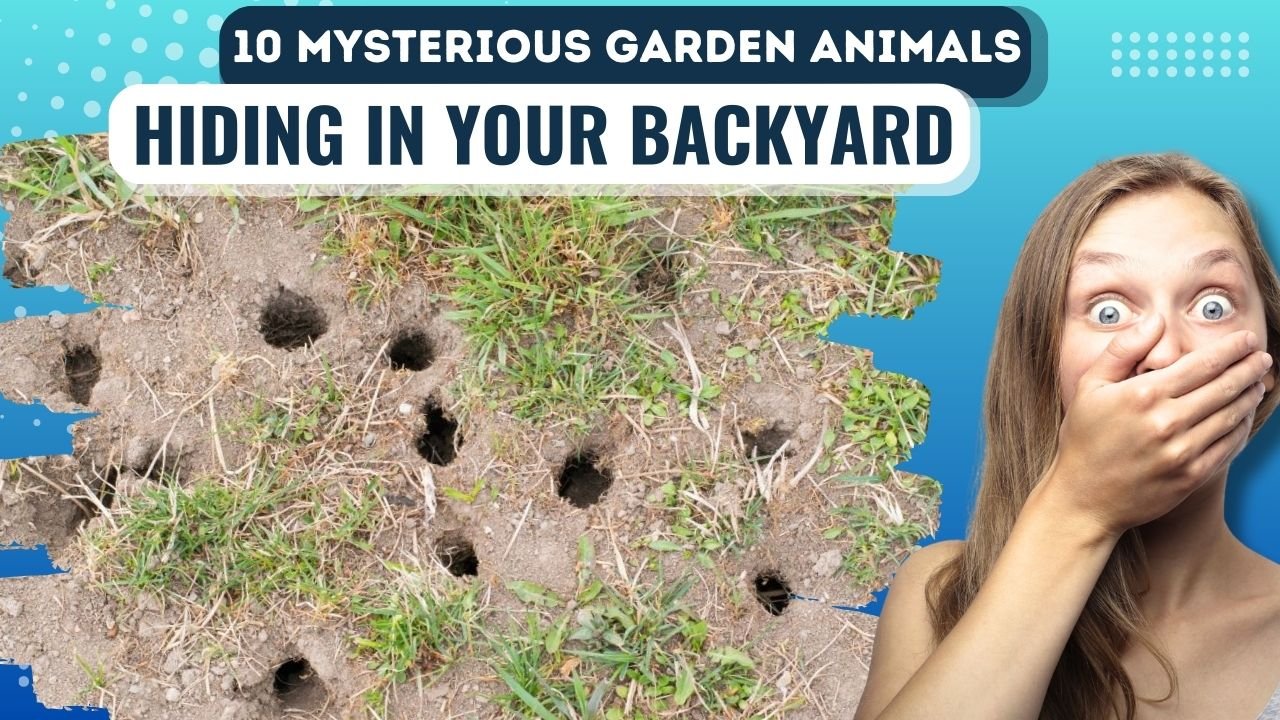
Explore the top 10 mysterious garden animals that might be hiding in your backyard. From animals that come out at night to those that blend into their surroundings, learn about the hidden wildlife in your garden. Ideal for anyone who loves nature or is curious about what’s in their yard.
Introduction
Gardens are usually seen as peaceful spots where we enjoy nature, but they might be hiding some truly fascinating creatures. From secretive nocturnal visitors to incredibly camouflaged critters, your garden could be home to a variety of mysterious animals. Let’s explore the top 10 garden animals that might be lurking just outside your door.
You may also like: 10 Animals that are Enemies to Each Other: A Closer Look at Natural Rivalries
1. The Eastern Whip-poor-will: A Ghostly Night Singer
The Enigmatic Call
The Eastern Whip-poor-will is a nighttime bird known for its haunting call that sounds like “whip-poor-will.” It’s often heard but rarely seen, making it one of the most mysterious night sounds in the garden.
Camouflage in Action
During the day, this bird blends perfectly with the leaf litter on the forest floor. Its mottled brown feathers make it nearly invisible, helping it stay hidden from predators while it rests.
2. The Garden Tiger Moth: A Marvelous Display

Striking Patterns
The Garden Tiger Moth has vibrant orange, black, and white wings that stand out and warn predators that it might be toxic or unpleasant to eat. These bold colors make it a classic example of a warning pattern.
Secretive Behavior
Despite its bright appearance, the Garden Tiger Moth is often hard to spot. It likes to stay hidden among leaves and only comes out at night, adding to its mysterious nature.
3. The American Toad: A Hidden Gem
Unseen Adaptations
The American Toad blends into its surroundings with its warty, brown skin, making it hard to spot among leaves and soil.
Amazing Defense Mechanisms
When threatened, the toad puffs up to look bigger and secretes toxins from its skin to deter predators. These tricks help it stay safe and hidden.
4. The Hedgehog: A Nocturnal Nomad
Nighttime Wanderer
The Hedgehog is active at night, searching for insects and small invertebrates. Its spiny coat protects it from predators, and it can roll into a ball to shield its vulnerable underside.
A Delicate Balance
You might only hear the Hedgehog’s snuffling noises or catch a glimpse of its spiky back, as it keeps a low profile and is active mostly at night.
5. The Orb-Weaver Spider: A Web of Secrets
Intricate Designs
Orb-Weaver Spiders create beautiful, circular webs that are not just decorative but also very effective for catching prey. Their webs are a fascinating part of their survival strategy.
Camouflaged Hunters
During the day, these spiders can be hard to spot as they hide in their webs or nearby foliage, blending into their surroundings.
You may also like: Top 10 Most Rare Animals in the World 2023
6. The Fox Squirrel: A Rare Sight
Secretive Behavior
The Fox Squirrel is larger and has distinctive reddish-brown fur. It’s shy and prefers to stay hidden in trees or thick bushes, making it a rare and intriguing sight.
Survival Strategies
Fox Squirrels avoid predators by being agile and skilled climbers. They also store food in various places to have enough to eat throughout the year.
7. The Long-Tailed Weasel: A Stealthy Predator

Master of Stealth
The Long-Tailed Weasel is small but agile, with a sleek body and long tail that help it move quickly through grass and underbrush. This makes it hard to spot but very effective at hunting.
Adaptations for Survival
It has a varied diet and can hunt different types of prey. Its stealthy movements and ability to stay hidden add to its mysterious nature.
8. The Green Darner Dragonfly: A Garden Acrobat
Aerial Acrobatics
The Green Darner Dragonfly is known for its impressive flying skills and bright green color. You might see it darting around gardens in search of prey.
Camouflaged Young
While adult dragonflies are easy to spot, their nymphs live in water and have excellent camouflage, making them hard to see despite their important role in the dragonfly’s life cycle.
9. The Red Fox: An Urban Phantom
Urban Adaptation
The Red Fox can live well in urban areas, including gardens. It has sharp senses and is very elusive, often heard but rarely seen. Its intelligence helps it navigate both natural and human-made environments.
Nighttime Activities
Active mostly at dawn and dusk, the Red Fox uses its keen senses to find food and avoid detection, adding to its mysterious presence.
10. The Common Shrew: A Tiny Mystery
Tiny but Mighty
The Common Shrew is one of the smallest mammals in gardens. Despite its size, it eats a lot and has a fast metabolism. Its small size and quick movements make it hard to spot.
Secretive Lifestyle
Living mostly underground, the Common Shrew creates extensive burrow systems. Its secretive behavior keeps it hidden from most predators and observers, making it a true garden mystery.
Conclusion
Your garden might be home to a range of mysterious creatures, each with unique behaviors and survival strategies. From the elusive Eastern Whip-poor-will to the stealthy Long-Tailed Weasel, these animals add an element of wonder to your garden. By keeping an eye out for these hidden residents, you can appreciate the rich and diverse life that thrives right outside your door.
Few More Queries
- What makes the Eastern Whip-poor-will so elusive?
- The Eastern Whip-poor-will’s camouflage and nocturnal habits make it difficult to spot. Its call is often heard, but it remains hidden during the day.
- How does the Garden Tiger Moth use its colors for survival?
- The Garden Tiger Moth’s bright colors serve as a warning to predators, signaling that it may be toxic or unpleasant to eat.
- What defense mechanisms do American Toads have?
- American Toads can puff up their bodies and secrete toxins from their skin to deter predators.
- Why is the Hedgehog considered a mysterious garden animal?
- The Hedgehog’s nocturnal habits and ability to roll into a ball for protection make it a less commonly seen but intriguing garden resident.
- How can I spot the Common Shrew in my garden?
- The Common Shrew’s small size and secretive, underground lifestyle make it hard to spot. Look for signs of burrow systems and listen for rustling noises.

Leave a Reply
You must be logged in to post a comment.